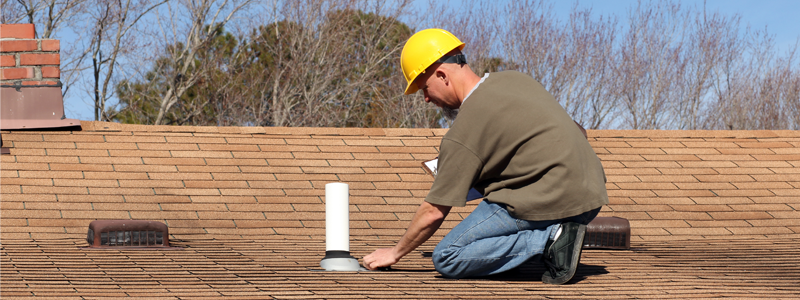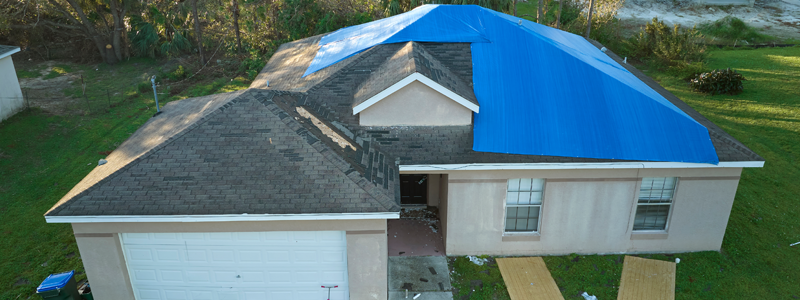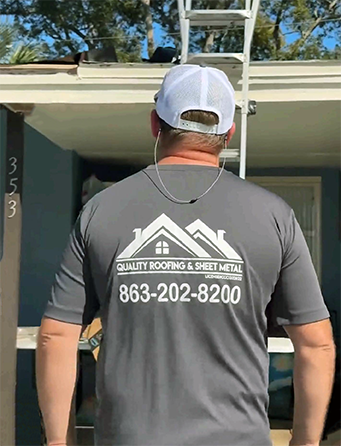After a severe storm, many homeowners are left wondering whether their insurance will cover the cost of a roof replacement. The good news? If you act quickly and follow the correct steps, you may be able to get your insurance to cover the cost of your roof replacement.
With Quality Roofing’s expertise and years of experience navigating storm damage claims, we’ll walk you through the roof insurance claim process from start to finish. You’ll learn how to document damage, file a claim correctly, and prepare for insurer inspections.
Whether you’re dealing with recent damage or planning ahead, this step-by-step guide will help you confidently navigate roof replacement through insurance.

When Does Insurance Cover Roof Replacement?
If the roof damage is sudden, storm-related, and well-documented, your policy may cover the cost of a roof replacement. Understanding which situations qualify is key to avoiding costly surprises.
Most Florida homeowners’ insurance policies will cover roof damage caused by these sudden and accidental events:
- High winds or hurricane-force gusts that tear off shingles or damage the roof deck
- Hailstorms, which can leave visible dents or cracks in shingles or metal panels
- Fallen trees or debris caused by storms that puncture or collapse the roof structure
- Lightning strikes, which can cause structural or fire-related roof damage
- Tornadoes or tropical storms, both of which are considered named perils in most Florida policies
If your roof damage is linked to a covered peril, and your roof was properly maintained and up to code, your insurance company is more likely to approve your claim.
While insurance protects against sudden storm damage, it usually does not cover issues caused by gradual wear or improper maintenance. These exclusions often include:
- Age-related deterioration (e.g., cracked shingles, granule loss from long-term sun exposure)
- Neglect or poor maintenance, such as failing to address leaks or clear debris
- Improper installation or prior faulty repairs
- Roof damage caused by pests or mold, unless directly resulting from a covered peril
Even in Florida’s tough climate, insurance providers expect homeowners to keep their roofs in serviceable condition. That’s why documentation and inspection history matter.
What Type of Roof Insurance Policy Do You Have?
Your roof insurance claim reimbursement amount will depend on the type of homeowners’ policy you carry.
- Actual Cash Value (ACV): This policy pays for the depreciated value of your existing roof at the time of storm damage.
- Replacement Cost Value (RCV): This policy pays the full cost to replace your damaged roof with new materials, minus your deductible.
Understanding the difference between coverage types is critical when navigating a roof replacement insurance claim in Florida. If you’re unsure which type of policy you have, Quality Roofing & Sheet Metal can help you review your insurance documents and prepare for your roofing claim process.
First Steps After Roof Damage
When your home experiences roof damage from a storm, acting quickly and strategically can make all the difference in a successful roof insurance claim. Here’s what to do immediately after the storm:
- Inspect the damage safely: Inspect the roof from the ground only. Look for missing shingles, lifted flashing, fallen debris, or sagging areas on the roof. Do not climb onto the roof yourself—safety is the top priority after a storm
- Document everything: Take clear photos of visible damage from multiple angles. Include timestamps if possible, and photograph surrounding areas, such as broken fences or fallen tree limbs, to support your insurance claim
- Prevent further damage: If your roof has been damaged, cover exposed areas with a tarp or other temporary barrier to stop water from entering your home. Most homeowners’ policies require this step to avoid claim denial due to neglect
- Call Quality Roofing & Sheet Metal: Our experienced team offers free roof inspections following storm damage. We’ll document the condition of your roof thoroughly and provide expert guidance through the insurance documentation process, giving you the confidence to move forward
Follow these initial steps to protect your home, preserve evidence, and streamline the claims process.

Filing the Roof Insurance Claim
Once you’ve documented the damage, it’s time to begin the roof insurance claim process. Call your insurance provider as soon as possible—most policies require timely reporting, and delaying could jeopardize your eligibility for coverage. When speaking with your insurer, be prepared to describe the event, including the date and time of the storm, and outline the damage observed.
You’ll also need to submit supporting materials, including clear photos and videos of the damage, any visible water intrusion inside the home, and a written estimate or inspection report from a licensed Florida roofing contractor. Partnering with a contractor ensures that your documentation is thorough and aligns with the insurer’s expectations, helping reduce the chances of claim delays.
Before ending your call, request your claim number and the contact information for your assigned insurance adjuster. This will be important for tracking the claim’s progress and coordinating the next steps.
What to Expect from the Insurance Adjuster
Once your roof insurance claim is filed, your provider will assign an insurance adjuster to assess the damage. The adjuster’s job is to determine whether the damage qualifies as a covered peril under your policy and to calculate an initial estimate for repairs or full roof replacement. This inspection typically takes place within a few days of filing your claim, depending on the severity of the storm and regional demand.
It’s highly recommended that you, the homeowner, be present during the inspection. If possible, having a licensed roofing contractor on-site or preparing you in advance can make a significant difference. While adjusters understand insurance guidelines, they are not roofing experts.
One important tip: do not agree to any settlement amount on the spot. Initial offers are often conservative, and there may be room for adjustments once a qualified contractor provides a detailed repair scope. It’s your right to review all damage estimates and negotiate if the insurance offer falls short of what’s needed for a safe, code-compliant roof
Getting an Estimate from a Trusted Roofer
Once your insurance adjuster has inspected the damage, the next step is to obtain a roof replacement estimate from a qualified contractor. In many cases, insurance companies will ask you to submit multiple estimates to ensure the scope and cost of the work are reasonable. This is your opportunity to choose a trusted roofing contractor.
Quality Roofing & Sheet Metal’s team conducts thorough evaluations to identify both visible and hidden issues caused by wind, hail, or fallen debris. By examining the entire roofing system, including underlayments, flashing, and decking, we ensure every necessary repair is documented.
Insurance Payouts and the Roof Replacement Process
It’s important to understand how your insurance payout is calculated and what to expect during the roof replacement process. Your claim summary will include a few key terms that determine how much you receive and when:
- Deductible – The portion of the claim the homeowner is responsible for paying out of pocket
- Depreciation – A holdback applied to older roofs based on age and condition
- Recoverable depreciation – This portion is released after proof of completed roof work is submitted
Once your claim is finalized, your contractor manages the entire roof replacement process on your behalf:
- Permit management in compliance with the Florida Building Code
- On-time installation using code-compliant materials and techniques.
- Final documentation to close out your insurance claim.
Be Prepared Before the Next Storm

From understanding what your policy covers to documenting the damage and coordinating with adjusters, each step plays a role in protecting your home and your finances.
By working with an experienced roofing contractor like Quality Roofing & Sheet Metal, you can approach the process with confidence. Remember, the time to prepare is before the next storm hits. Schedule a roof evaluation today and ensure your home is ready, no matter what the forecast brings.
Ready to protect your home?
Quality Roofing & Sheet Metal offers free, no-obligation roof evaluations and estimates.
